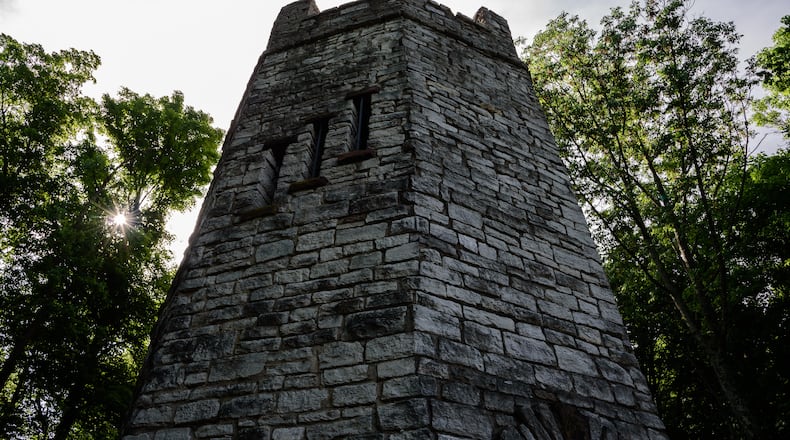Built to provide views of Community Country Club, it took a year for boys with the National Youth Administration to construct the 30-foot-tall tower from salvaged stone.
The walls are more than three-feet thick in some places, according to a 1941 Journal-Herald story marking the completion of the project. Inside, 50 stone steps spiral to the lookout platform that offered views for 15 miles.
During the 1960s, the remote location encouraged vandals who painted names on the walls and left whiskey bottles and beer cans scattered on the grounds. Shingles torn from the roof and glass bottles were thrown at passing cars on Patterson Boulevard below.
Park maintenance crews boarded the door and later covered it with a steel gate but the tower was repeatedly broken into.
Strange tales have surrounded Lookout Tower for decades, according to Chris Woodyard, author of more than a dozen books including the Haunted Ohio series.
There have been sightings of eerie figures dancing around a fire and reports of unexplained scorch marks found on the ground.
But the most common story is the appearance of a ghostly girl and boy whenever lightning illuminates the sky.
That intriguing tale is based in fact.
Peggy Harmeson, a 16-year-old Bellbrook girl, died inside the tower when it was struck by lightning in 1967.
She and 17-year-old Ronnie Stevens reportedly took shelter inside when a thunderstorm rolled in.
Harmeson was found dead lying on the 11th step in the tower, half of her body covered in severe burns. Stevens survived but was uncontrollable when an ambulance arrived and was restrained in handcuffs.
“Investigators theorized the couple was walking down the stairway when a lightning bolt ripped into the tower,” the Journal Herald reported.
Legend has it after her death visitors found burnt images of the girl within the tower. No matter how much they were scrubbed, the stains remained on the walls.
Despite the sketchy stories, the tower – its door sealed with concrete – still draws the curious.
Places that appear spooky can be exhilarating, Woodyard said. “I just wonder if to feel alive, to be fully feeling alive, we need this sense of fear and excitement?”
About the Author





